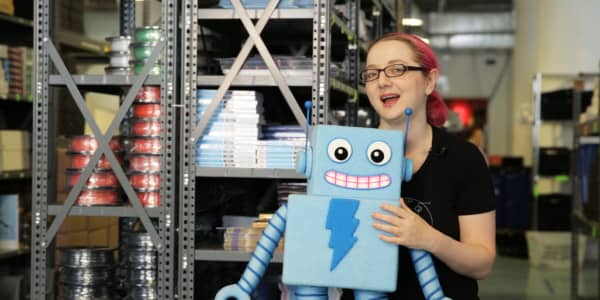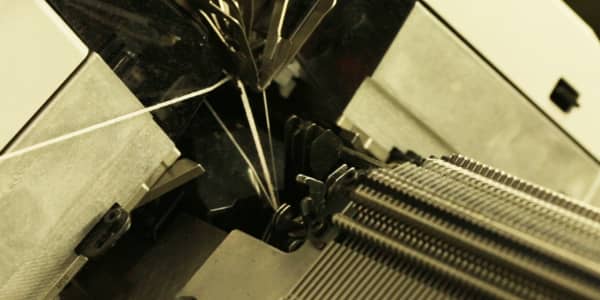
When it comes to envisioning a future based on advances in 3-D printing, popular opinion tends to run to extremes. 3-D printing is either a novelty—making candy bars on the Hersey's factory floor and minor items like iPhone cases—or it's part of a dystopian future, like printing firearms and human body parts.
The health-care promise held by 3-D printing, though, is real, and it may develop in much smaller steps—not livesaving or life-lengthening technologies, but life-changing innovations. It shouldn't have to take the shape of a 3-D-printed organ or create a photo-op for lab mice with human ears, either, to receive attention from the press.
This is the goal and direction of TeVido BioDevices, an Austin, Texas-based 3-D printing start-up that is tackling a huge women's health-care issue: reconstructive surgery after a breast cancer–related mastectomy. TeVido is using living cells from women to 3-D-print a small human body part: a female nipple.
The need for this kind of plastic surgery innovation in the health-care system exists today and is growing. "There's a real shift in the U.S. to mastectomy," said Laura Bosworth, CEO and co-founder of TeVido.
Read More Getting healthy, an app at a time
Women are being diagnosed with breast cancer earlier, and that leads to survival rates being much higher and a longer life expectancy. There has also been a huge increase in preventive mastectomies, highlighted by Hollywood celebrity Angelina Jolie's public stance on her own decision to have a double mastectomy. Insurance reimbursement rates are also up, due to the Women's Health and Cancer Rights Act (WHCRA), a U.S. federal law that requires most group insurance plans that cover mastectomies to also cover breast reconstruction.
Bosworth said the increase among women choosing mastectomy, coupled with the fact that breast cancer survivors are younger on average and living longer, creates significant issues for women related to their bodies and self-esteem. There is a well-known psychological impact to women's emotional health due to body issues, and women who have double mastectomies opt for reconstructive surgery at a much higher rate.
After retiring from a career in the technology sector, Bosworth began discussing with plastic surgeons how 3-D printing could make a difference in health care. The original patent behind TeVido's 3-D printing technology was intended for burn victims and skin printing, but Bosworth said discussions with plastic surgeons convinced Bosworth that breast reconstruction was a major issue and a less crowded space than burn therapies.
Breast reconstruction: By the numbers
Globally, as many as 1.5 million women a year are diagnosed with breast cancer.
As many as 300,000 breast cancer diagnoses are made in the U.S. annually.
Approximately 40 percent have a mastectomy.
Improvements in early detection and treatment have resulted in 10-year survival rates greater than 75 percent.
One-third of women who have mastectomies opt for breast reconstruction surgery—the rate is double for women who have double mastectomies.
80 percent to 90 percent opt for nipple reconstruction.
The number of reconstructions has been on the rise since the late '90s but has begun to stabilize.
Preventative double mastectomies have also been on the rise in the U.S., a trend that is expected to continue.
A 3-D material world
Bosworth envisions much wider implications for 3-D printing in the field of reconstructive surgery.
She gave as an example another cancer-related body issue. Many people receiving chemotherapy have a port inserted in their upper chest through which the drugs are delivered. This incision often leaves the body disfigured. For women, the "divet" would make women feel uncomfortable to wear a dress that shows their chest. "This technology could help there," she said.
Read MoreDentists save some pain through tech
This future is already taking shape—to some extent. If we think of 3-D printing as making materials that are part of the body rather than replacing organs, there are already facial bones being printed for car accident victims. The FDA approved a 3-D-printed material from Oxford Performance Materials for a skull and cranial reconstruction.
Bosworth noted we already use materials like polymers and metals for procedures like titanium knee replacement. 3-D printing can improve on those existing technologies, since it can customize designs per individual, something medical technology giant Stryker is already doing. At the more extreme lifesaving end of 3-D printing's health-care potential, the University of Michigan received an exemption to give an infant with a collapsing trachea a 3-D-printed trachea.
"Plastic surgeons do fat injections all over, and that's all unregulated," Bosworth said.
TeVido's innovation—and the next step—is 3-D printing of living cells. "There's nobody exactly like us," Bosworth said. Stopping short of the printing of human organs might make TeVido's dream come to reality more quickly. "The burden you have to prove with an organ is an entire life, and that has very long-term implications. What if it only works for a few years?" Bosworth said. "Clinical trials have to be designed to answer all of those questions."
Bosworth does believe 3-D-printed organ technology is going to become a reality in the marketplace, but it does not have to begin with entire organ replacement, she said. "You can make parts of a liver, a patch. Or in hearts, where we are already using stem cells as a treatment for heart disease, we can make a heart patch. You can start with smaller components, and it will be pretty fantastic," she said.
The more I started diving into this and saw how amazing it was, I realized it was a real opportunity to make a difference in the lives of millions of patients, and that wasn't something I really felt I did in high tech.Laura BosworthCEO and co-founder of TeVido BioDevices
She does think the exterior of the body is going to be remade by 3-D printing first.
A nipple is on a body's exterior. TeVido's mark of success is patient and physician satisfaction—both being able to say it's a better solution to a current approach to nipple reconstruction that has had unpredictable results. Now the nipple is reconstructed by making little cuts in the breast and pinching up the skin and suturing it to create the shape. After healing, the nipple is then colored with a tattoo. But Bosworth said the tattoos tend to fade, and women often say it doesn't last for more than a year or two and don't want to have a second surgical procedure.
The next big milestone for the company are proof points in animal testing—being able to show improved shape retention over the standard reconstructive procedure today. The tests are being done in mice.
The company isn't overly concerned that the shift to 3-D-printed living cells will be a non-starter with regulators. Bosworth said it has confidence that its approach can receive regulatory approval.
Read More The tech-based future of lingerie revealed
"They are laying out rules and regulations for cell therapies, and it's not onerous. It seems reasonable," she said. "The living cell is the issue; the 3-D printer is just a piece of equipment."
(It's a piece of equipment that is a closely guarded secret—TeVido will not allow its latest printer to be photographed for publication.)
Ultimately, the focus on the exterior of the body could be broadly applied using 3-D-printed solutions. "Anywhere there has been a disfigurement. It could be military-related," Bosworth said.
It has already had a life-changing effect on Bosworth, who worked her entire career as a tech executive at companies including IBM and Dell before deciding to leave the sector and work as an entrepreneurial coach and take a position on a University of Texas-El Paso advisory board, through which she was introduced to new technologies. TeVido has now raised over $1 million, including science grants and a $30,000 Indiegogo campaign.
"Life is strange," she said of the road that took her from semiretirement back to head of a life sciences start-up. "The more I started diving into this and saw how amazing it was, I realized it was a real opportunity to make a difference in the lives of millions of patients, and that wasn't something I really felt I did in high tech."





